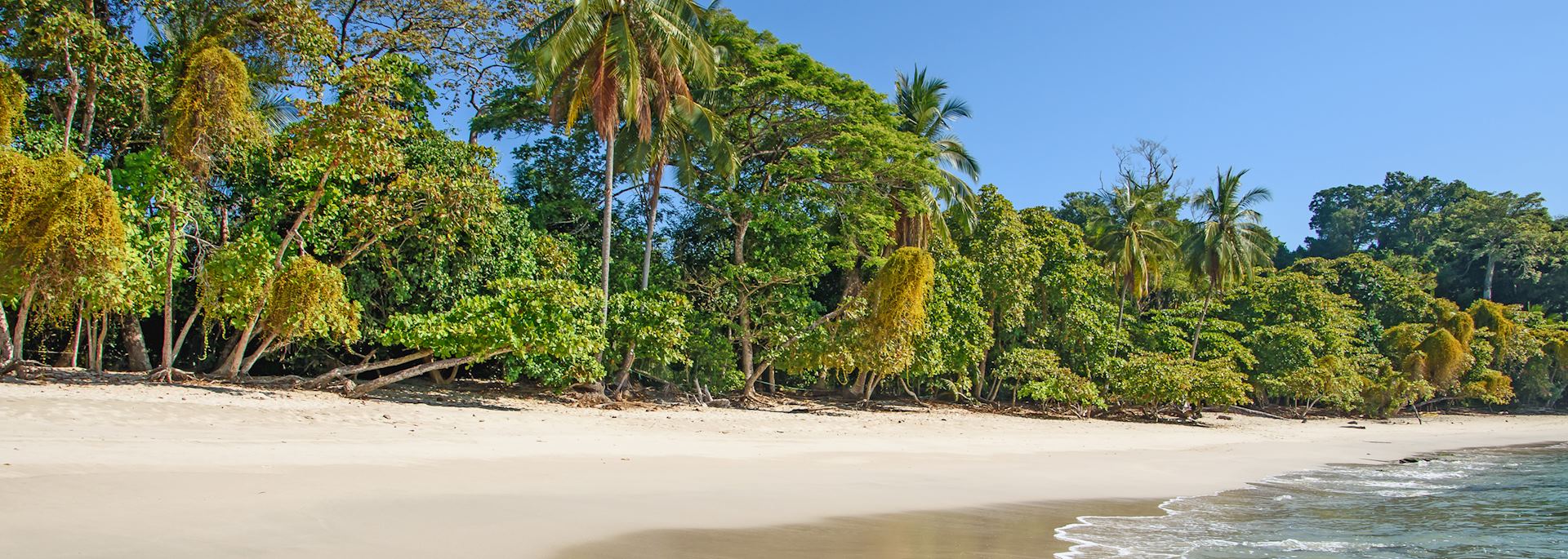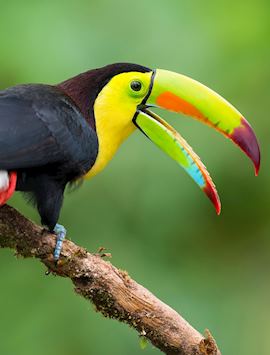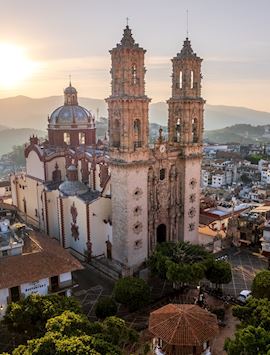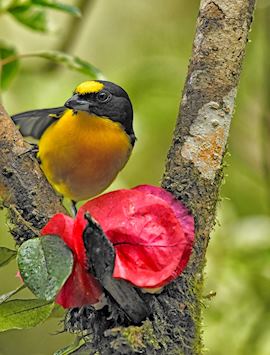By specialist Leticia
Central America and Mexico are blessed with many good beaches on both their Caribbean and Pacific coasts. If you’re looking to include some beach time on your trip in the region, we’ve pinpointed the best places to go in each country. We’ve also highlighted the main assets of the beaches in a particular country to help you make the most out of your stay. For example, there’s much excellent snorkelling in Central America, but that isn’t the case for every beach destination — so we’ve highlighted the places that really stand out, for us.
Best beaches in Belize: Placencia and Hopkins
Good for: snorkelling, diving and sleepy beach resorts
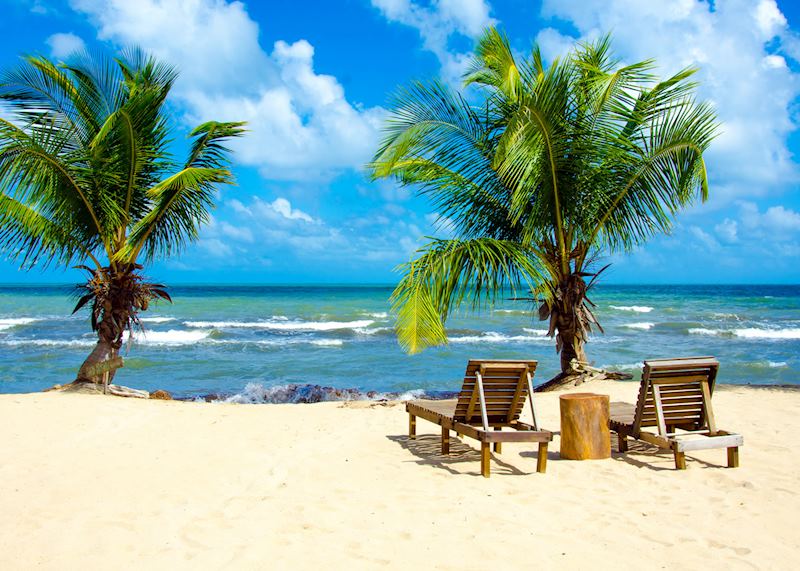
Most visitors to Belize who are intent on spending time on its beaches and observing its prolific marine life veer toward Ambergris Caye. If you’re a diver eager to explore the vast sunken cave system of the Blue Hole, you’ll need to spend a night or two here. But, if snorkelling is more your thing (and, take note — you can see an awful lot in Belize’s waters by snorkelling alone), I’d be tempted to head south to the sleepy beach towns of Placencia and Hopkins.
Placencia has only one (extremely narrow) main street, and you’ll rub alongside local fishermen busy at work. Hopkins is even less built up, more of a Garifuna village complete with simple beach-shack eateries rather than a purpose-built resort town. The beaches at both are full of soft white sand with a few slicks of seagrass, and they feel spacious. They’re hit by small waves, and it’s easy to walk from wherever you’re staying to the shore.
Snorkelling-wise, small-group trips depart regularly from both Placencia and Hopkins to visit cayes including Bread and Butter Caye and the less whimsically named South Water Caye. Here, you could see manatees, lobsters, eels and groupers.
Best beaches in Costa Rica: the Pacific Coast and the Osa Peninsula
Good for: surfing, families, and castaway-esque beaches
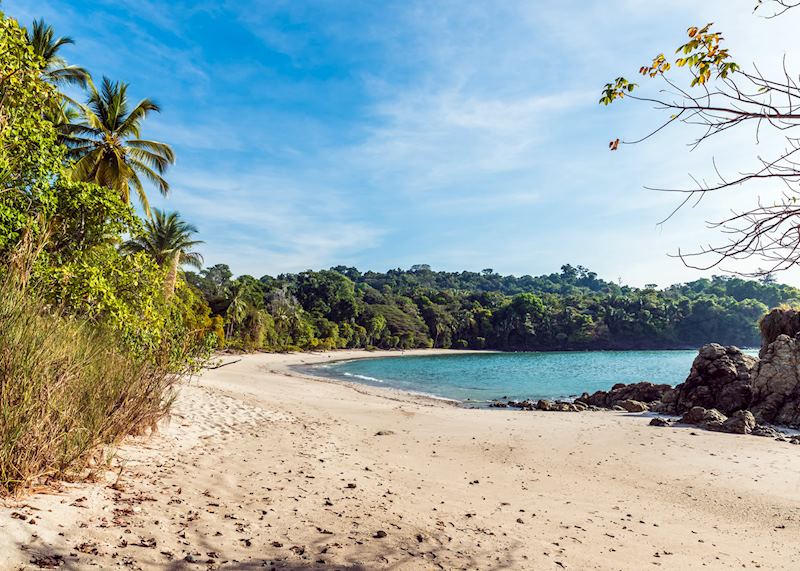
Costa Rica’s beaches come in many guises. There’s the Pacific Coast, which enjoys rolling, sometimes heavy surf, and the Caribbean, where the waters are more placid and a laid-back Afro-Caribbean ambience holds sway.
Many domestic and international visitors flock to Manuel Antonio National Park, a quartet of beaches of silvery-grey sand with tropical forest spilling right to the high-tide line. Two of the main beaches are connected by a tombolo — a natural sand bridge — and shallow rock pools lie just offshore. There are plenty of places to scramble and watch local wildlife (including several species of monkey).
Meanwhile, farther north lies Tamarindo, a popular surf town. The waves are smaller and the sea calmer than in the south, so it’s a good spot for fledgling surfers. Our guide to family trips to Costa Rica talks in more detail about the country’s child-friendly beaches.
Costa Rica also shines when it comes to really wild, empty, undeveloped stretches of sand — the kind that have never seen a lounger in their lives. In the far-flung Osa Peninsula, you can walk along beaches edged with unhampered tropical forest, ride horses in the scurf and spot whales off the coast. You can find out more about the Osa Peninsula in our guides to luxury stays in Costa Rica and Costa Rica’s wildlife.
Finally, for an alternative beach break, you might like to try beachside glamping in the Nicoya Peninsula, as recommended by Michael in our guide to honeymooning in Costa Rica.
Best beaches in Honduras: Roatán
Good for: snorkelling, diving and value for money
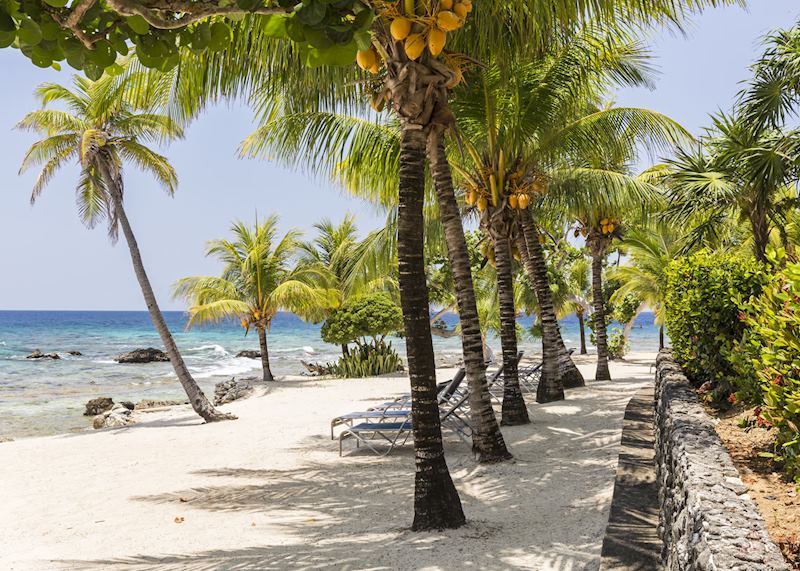
Honduras is used to playing second (or even third) fiddle to its surrounding countries, and is often overlooked by visitors to the region. But, the snorkelling off its island of Roatán (once, intriguingly, a pirate stronghold) rivals Belize’s.
¸é´Ç˛ąłŮá˛Ô’s beach communities are languid places that still retain the feel of a Garifuna village. Despite this, it doesn’t receive Belize’s volumes of visitors, making it less expensive to stay on Roatán.
The beaches on the southernmost tip of the island, West Bay, have powdery sand and shallow waters, making snorkelling here easy-to-access as well as visually fulfilling. All kinds of reef fish parade through the water, including angelfish species, blue tang and parrotfish. Swim a bit further out, and you might come across a sea turtle. There are also several wreck sites located just offshore, which are easily reached by divers with varying degrees of experience.
Best beaches in Mexico: Isla Mujeres, Isla Holbox, and Zihuatanejo
Good for: both classic, sandy beaches and calmer, off-the-beaten-track options
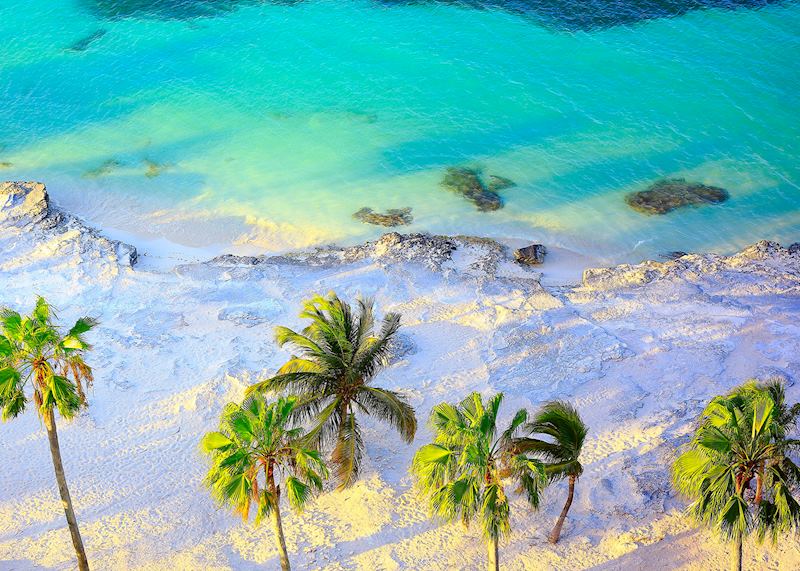
Mexico’s Mayan Riviera on the Yucatán Peninsula has the country’s most well-known beaches, but for a truly rewarding beach experience, I suggest you skip mainland Yucatán and head to two islets just off the coast.
You can reach Isla Mujeres via a half-hour, high-speed ferry ride from Cancún, the gateway to the peninsula. Straddling the Mesoamerican Barrier Reef, which is second only in size to Australia’s Great Barrier Reef, it has excellent diving and snorkelling, but you equally come here for the atmosphere and the quality of the beaches.
The water is a dreamy shade of cyan, the beaches white and floury, and the buildings are all low-lying, with none of the eyesore high-rises that blight other parts of the Yucatán’s coastline. Most hotels are converted villas with a bohemian feel. There’s only one particularly busy spot, Avenida Hidalgo, and even that has a whimsical feel about it, with its stores peddling embroidered Maya blouses, Mexican skull decorations, and seashells. On the island’s northernmost tip, you’ll find the ruins of a Maya temple, dedicated (unusually) to a goddess, Ixchel.
Much farther north, just off the northernmost tip of the peninsula, there’s Isla Holbox — an even more understated alternative to the glitz and overcrowding of the Mayan Riviera.
A car-free island where you roam around by golf buggy, or simply barefoot, its beaches do sometimes come with a slight sprinkling of seaweed, but they’re relatively clear compared to what you’ll find on the Mayan Riviera.
There are no chain hotels here — just taco joints, brightly painted buildings, and lots of space. You can wade out a long way from the beach and sunsets are a main event, with locals and visitors alike gathering to watch the spectacle.
I recommend staying at Ser Casasandra, a boutique hotel with oceanfront rooms and real cutting-edge design — walking into its lobby is like stepping inside the pages of Architectural Digest.
Over on the Pacific Coast, Zihuatanejo (affectionately nicknamed ‘Zihua’) keeps a low profile, aside from a passing appearance on the silver screen in The Shawshank Redemption. A fishing community that spreads up the surrounding hillsides, Zihua hugs a bay and its main beach, Playa La Ropa, is a curve of tawny sand that you can walk all the way along.
The waters are calm and the town feels authentically Mexican, unlike the Mayan Riviera. The national flag flies everywhere and you’ll see plenty of fishermen and townspeople just going about their business. Come evening, there’s a clutch of good seafood restaurants with views over the bay and the hillsides, which are lit up with a million points of light.
Best beaches in Nicaragua: the Corn Islands
Good for: a slice of undeveloped Caribbean, snorkelling
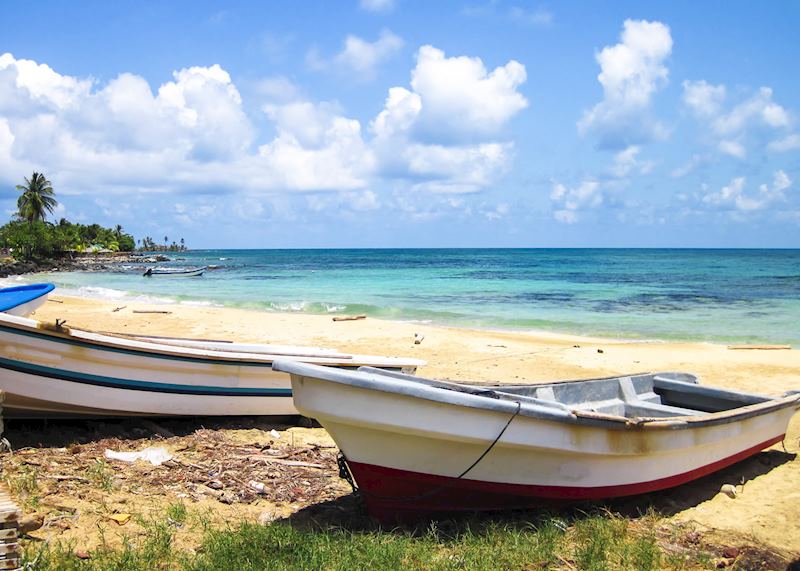
Marooned a good 69 km (43 miles) from the mainland lie the Corn Islands, proud owner of Nicaragua’s best beaches. Their untamed, tropical interiors are criss-crossed by more dirt paths than roads, and the ivory sand seems completely untouched in places, especially on the east coast of Little Corn Island.
Offshore, you can go snorkel at places where hammerhead sharks are known to gather. Locals here speak English and Miskito (an indigenous language of Honduras and Nicaragua) rather than Spanish.
There are a few caveats that come with visiting such an unspoiled place: electricity can be patchy, for one, and places to stay are limited. But, if you’re looking for isolated Caribbean beaches with few commercial trappings, the Corn Islands might fit the bill.
If you prefer to stick to the mainland, the golden-sand beaches around the town of San Juan del Sur on Nicaragua’s Pacific coast offer good surfing and boat trips. You can decide on where to stay from a small selection of high-quality ecolodges.
Best beaches in Panama: Bocas del Toro
Good for: snorkelling and experiencing laid-back islander life

Bocas del Toro is a smattering of islands tucked in the far west of Panama, right on the border with Costa Rica. A community connected by water taxis and ferries, you can either beach-hop or stay put somewhere for a few days. Although traditionally popular with backpackers, the whole archipelago has a very mellow, Caribbean feel, and you’ll find boutique-style hotels and locally owned restaurants rather than resorts and big-name chains.
The beaches are fine-grained, white-sand affairs, the sea bottle-green shading into bright turquoise. The coral reefs here are particularly healthy, and each snorkelling spot has its own star draws — literally in the case of Starfish Beach, where you’re likely to see several large sea stars sprawled in the waterline.
Beach itinerary ideas in Mexico and Central America
Start thinking about your experience. These itineraries are simply suggestions for how you could enjoy some of the same experiences as our specialists. They're just for inspiration, because your trip will be created around your particular tastes.
View All Tours in Central America & Mexico